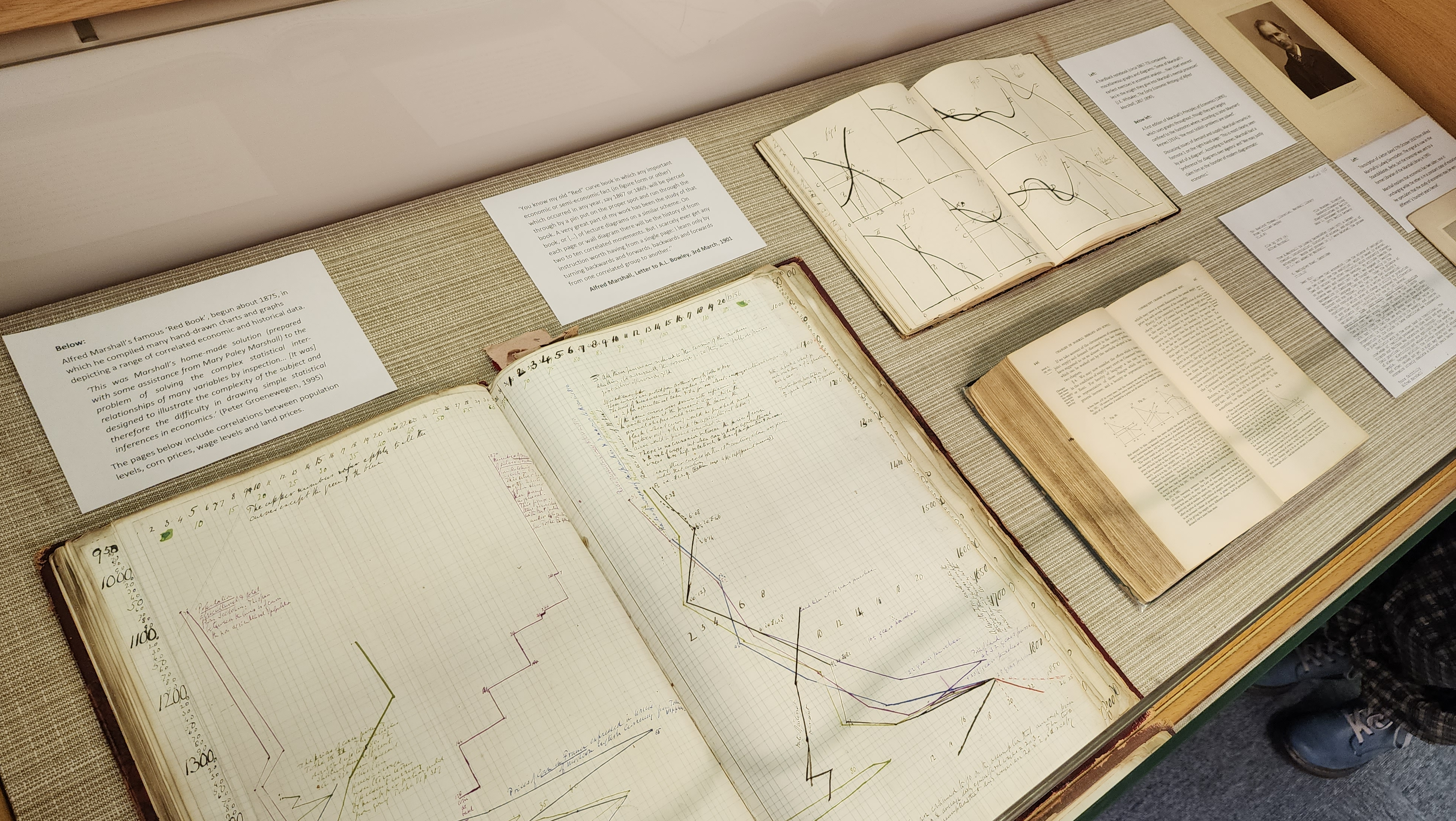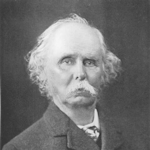Professor Marshall achieved the rank of Second Wrangler in the 1865 Cambridge Mathematical Tripos, being a member of St John's College in Cambridge, where he was elected to a fellowship, before becoming a Professor of Political Economy at Cambridge in 1885.
No stranger to the world of economics, he was the son of a clerk at the Bank of England, and a cousin of the economist Ralph Hawtrey. Born at Bermondsey in 1842, he grew up in Clapham.
Professor Marshall was a founder of neoclassical economics and one of the most influential economists of his time. His book the Principles of Economics became a core economic textbook both in Cambridge and much of the English speaking world for many years.
He spent over a decade working on his treatise, extending his original plan to a two-volume compilation on the whole of economic thought. Its main technical contribution was a masterful analysis of the issues of elasticity, consumer surplus, increasing and diminishing returns, short and long terms, and marginal utility. The first volume was published in 1890 to worldwide acclaim, establishing him as one of the leading economists of his time. Alas, the second volume was never published.
Much of the success of Marshall's book derived from his effective use of diagrams, and he was the first to develop the standard supply and demand graph demonstrating a number of fundamentals including the supply and demand curves, market equilibrium, the relationship between quantity and price in regards to supply and demand, the law of marginal utility, the law of diminishing returns, and the ideas of consumer and producer surpluses. Some diagrams in current textbooks still use his graphs and diagrams to communicate ideas in Economics.
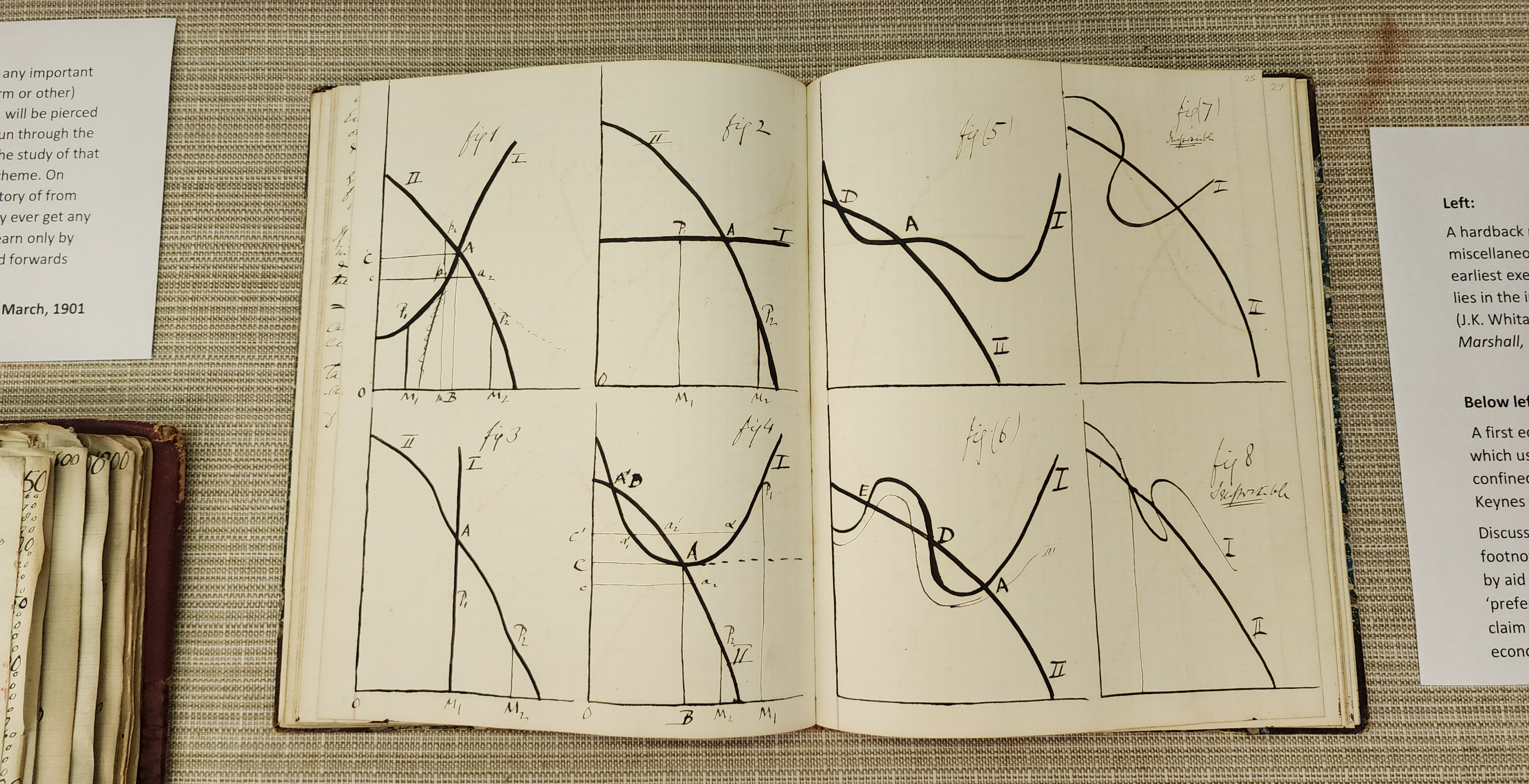
Professor Marshall was also an influential teacher, and for many of his students an inspirational one. Among his most important pupils were both Mary Paley, who would become, as well as Alfred’s wife, an economist and economics lecturer in her own right, and John Maynard Keynes. It was these two who, by founding the Marshall Library of Economics, put into effect Alfred’s wish to improve library facilities for Economics students and make Economics books more readily available to them. This was demonstrated throughout his career in Cambridge.
In his earlier obituary for Professor Marshall, Keynes pays tribute to the genuine concern felt by both Alfred and Mary for the reading needs of their students , a concern corroborated by numerous anecdotes and reminiscences written by other former students.
Situated just off Madingley Road, and designed partly by Alfred himself, Balliol Croft was the home of the Marshalls from 1886. Alfred’s study was on the first floor, adjoining the balcony. “He was anxious to have his study on a higher floor,” Mary wrote in her memoir What I Remember, because “he thought that in Cambridge it was as well to live as far from the ground as possible”. The house is now the President’s Lodge at Lucy Cavendish College.
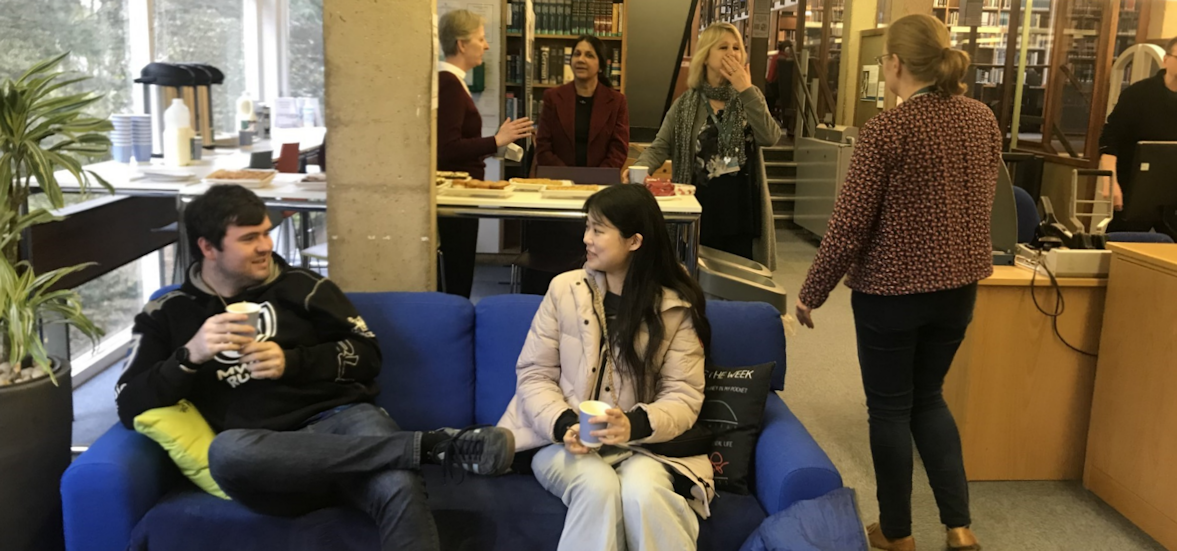
Alfred and Mary had no children of their own, and instead both cared deeply about the education of the future generations of economists. In every recollection of Marshall by his pupils there are two common elements: books and tea. Many of the Friday afternoon visits that students made to the Professor in his home, Balliol Croft, ended in tea followed by the lending of books, according to Donald Ross, the Marshall Librarian in 1991.
Indeed, students after tea at Balliol Croft would be expected to take away as many volumes as they could carry on the way home along the Madingley Road. John Maynard Keynes later wrote “The book-laden departing visitor would have a word with [Mrs Marshall] downstairs before he left, and she would see him out of the door and along the drive with the deepest satisfaction in her eyes.”
As well as being a lender of his own books, Alfred also cultivated a more ‘official’ library for the use of economics students at Cambridge. In 1895 he and Henry Sidgwick had set up the Moral Science Library, based in the Old Divinity School opposite St John’s College, containing books on economics, theology and philosophy, together constituting the discipline then known as ‘moral science’.Largely through Marshall’s own efforts, the Economics Tripos came into being in 1903, and the Economics books from the Moral Science Library were duly transferred to the keeping of the new Special Board for Economics and Politics. By 1909 The Departmental Library of Economics was established (still in the Old Divinity School) with John Maynard Keynes as its first Librarian.
Following Alfred’s death in 1924 the Marshall Library was founded by his widow, with support from Alfred’s pupil, John Maynard Keynes.
The centenary exhibition takes its title, The Use of a Library, from one of Keynes’ observations about Alfred, recorded in his obituary for Mary:
It was an essential part of [Alfred] Marshall’s technique of teaching to encourage his pupils to read widely in their subject and to learn the use of a library. To answer a question of price index numbers, a third- or fourth-year student would not be expected just to consult the latest standard authority. He must glance right back at least to Jeavons or Giffen, if not to Bishop Fleetwood; he must look at any articles published on the subject in the Economic Journal during the last twenty years; and if he is led on to browse over the history of prices since the Middle Ages, or to compare the prices of wheat in terms of wages in the times of Solon and Charles II, no harm will have been done. (Keynes 1944)
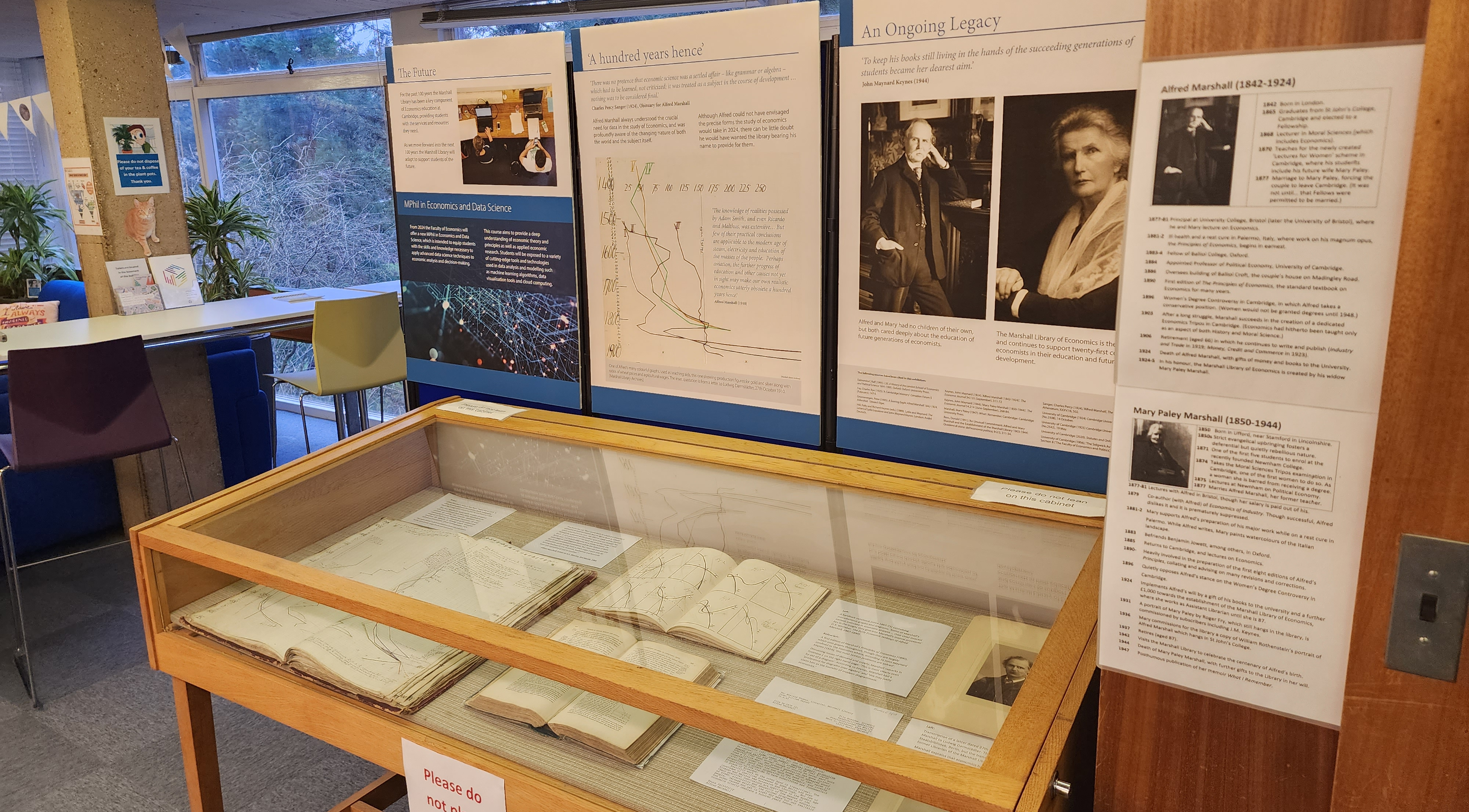
Mary Marshall was the driving force in the foundation of the new library - whose first home was in the former Balfour Laboratory in Downing Place, owned by Newnham College,where Mary had been a student. She held a crucial role as honorary Assistant Librarian from 1924 until her retirement in 1937 at the age of 87. It was Mary who oversaw not only the foundation but also the development and expansion of the library, including its move in 1935 to larger premises in the shape of the former Squire Law Library in Downing Street.
A well-known figure on the streets of Cambridge as she cycled to and from the library every day well into her eighties, Mary worked tirelessly in the acquisition and cataloguing of books, making them increasingly available for the use of students and in support of the developing Tripos teaching.
When Mary died in 1944 her will included a significant legacy: ‘Ten Thousand Pounds to the Chancellor Masters and Scholars to be applied by the expenditure by the University of either capital or income for the development and increased usefulness of the Marshall Library’. Like her husband, Mary was committed to the idea that the purpose of the library was to be - and to continue to be - both useful and well-used.
Such a purpose was undoubtedly served by the move to the current building, which was part of the post-war expansion of the University. It is located at the Sidgwick Site, a framework for the development of was set out in a plan by Casson Conder Architects, and designed by Sir Hugh Casson. As documented in the exhibition, this was part of the huge post-war expansion of the University, planning for which began in 1949, only a few years after Mary’s death.
Buildings were arranged around courtyards in reference to the traditional form of collegiate development for the design of a major centre for Arts, Humanities and Social Sciences. Construction began in 1959 and the Faculty of Economics and the Marshall Library opened in 1961.
Mary would be glad to know that Casson’s airy and elegant reading room – modelled partly on the reading room of the Downing Street library – is a hugely popular study space for today’s Economics students, and houses a vast collection of Economics books and other resources for the support of the Tripos teaching. She would also be glad to know that under the name of the Marshall Fund her bequest continues to assist the current library’s continued expansion and development, including the purchase of e-books and online datasets. Above all, perhaps, she would be glad to know that the library continues the Marshalls’ work of putting books into the hands of students.
The Marshall Library of Economics is the legacy of Alfred and Mary and continues to support twenty-first century economists in their education and future development. The exhibition in the social area of the library celebrates the history of the library, and the ongoing legacy of Alfred and Mary’s efforts to support the Economics Tripos.
